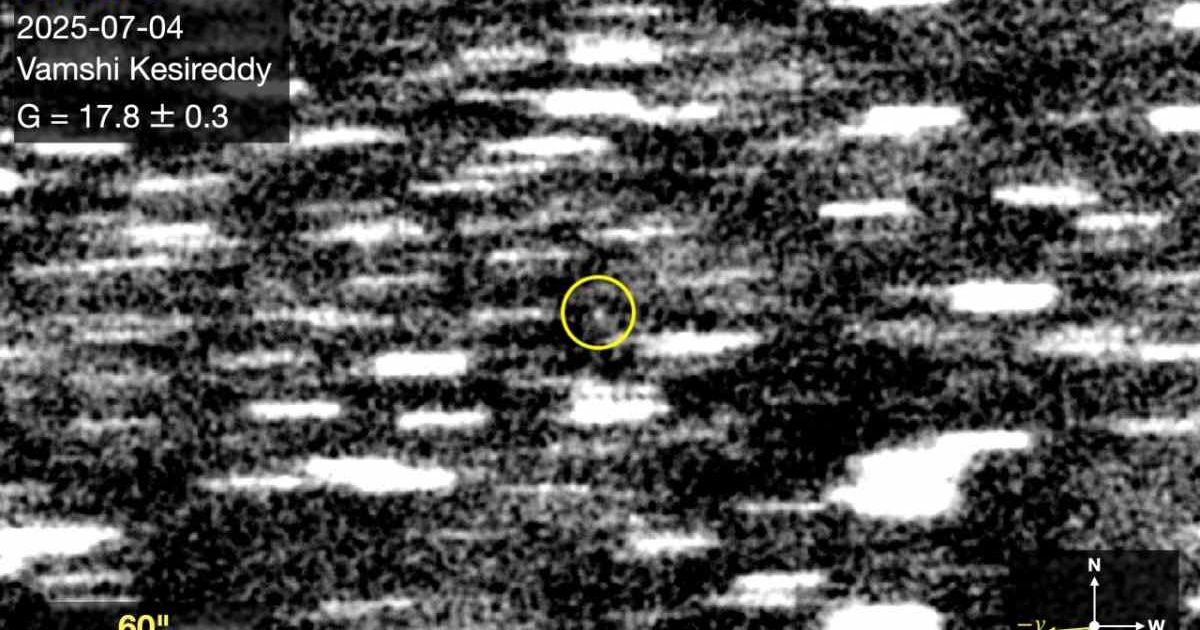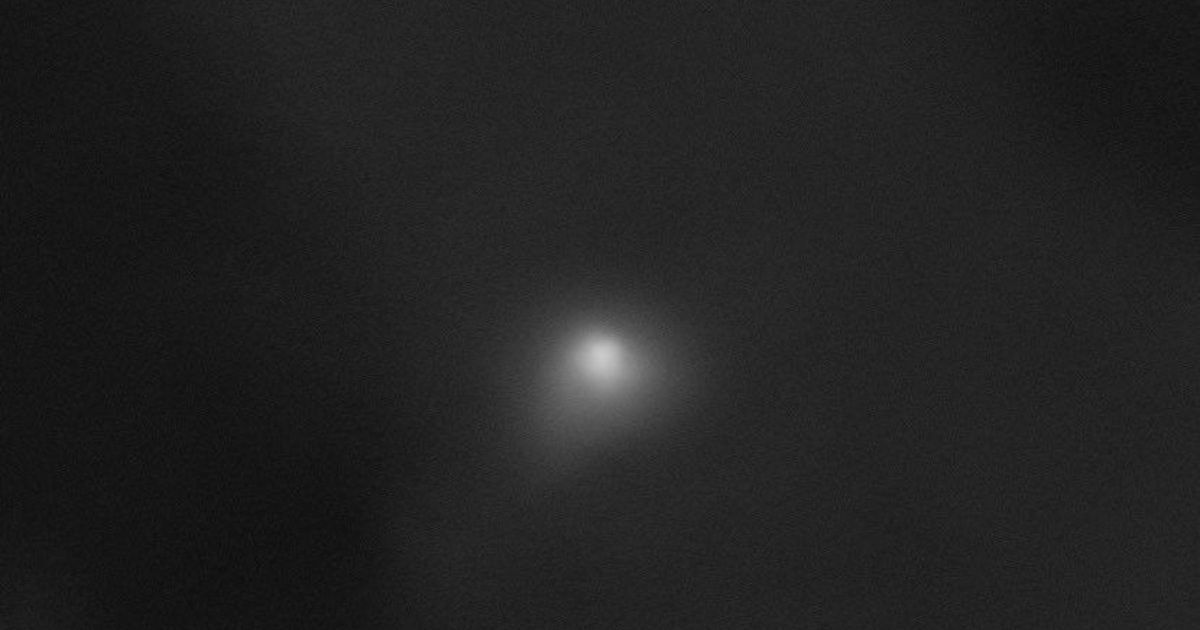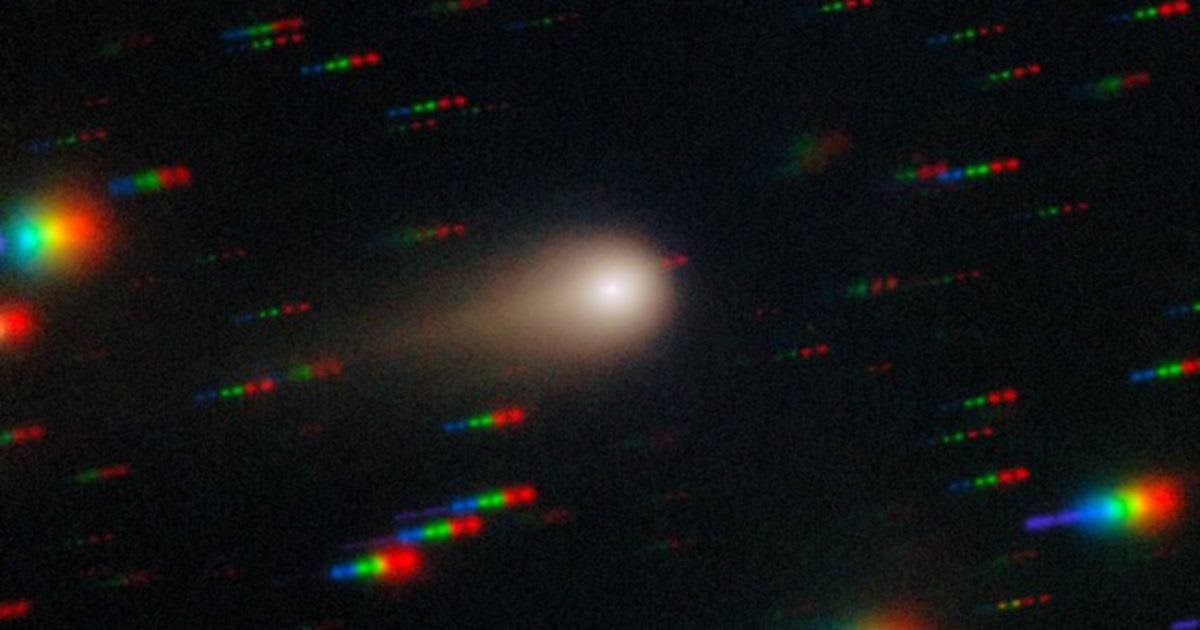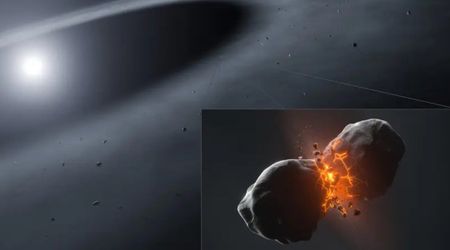In new 3I/ATLAS image, two glowing ion tails and a faint anti-tail stun the internet

An amateur astronomer has captured a stunning new image of the interstellar visitor 3I/ATLAS, showcasing a spectacular pair of ion tails and a perplexing "anti-tail" pointing toward the Sun, according to Harvard astronomer Avi Loeb's Medium blog.

This stunning photo was taken by astrophotographer Mitsunori Tsumura on November 22, 2025, at 7:25 p.m. UTC, with a half-meter telescope. It was then shared and discussed by Harvard professor Avi Loeb via his blog. The photo shows the object enveloped in a glowing cloud, or "coma," and a tail that appears to extend as far as 3.1 million miles away from the Sun. But the most fascinating feature is what scientists call an anti-tail, a faint trail of material pointing toward the Sun, extending about 0.62 million miles.
🚨 Stop scrolling — this is the wildest 3I/ATLAS image yet.
— 3I/ATLAS TV (@3iatlas_tv) November 25, 2025
Captured by Mitsunori Tsumura on Nov 22 with a 0.5 m telescope, the comet is 300 million km away… yet its tail stretches 5 million km, and its anti-tail 1 million km toward the Sun.
And here’s the mind-bender:
That… pic.twitter.com/qZs2es4GW6
Professor Avi Loeb, a leading voice on interstellar objects, highlighted the anti-tail's unusual properties. According to his analysis, the material making up the anti-tail would have to be very dense and powerful to punch through the solar wind, the stream of charged particles constantly flowing from the Sun. Loeb says the outer layers of the anti-tail are up to a million times denser than the surrounding solar wind.

According to Loeb, if 3I/ATLAS were a natural comet, the amount of gas required to create such dense tails would imply a huge mass loss—roughly 10% of the 33 billion tons that he estimates the object's mass to be. That could lead to significant structural changes and even cause the object to break up. But it's still intact. Moreover, there is the case of non-gravitational acceleration, now "statistically significant at ten standard deviations," which indicates that the object is being pushed. Loeb suggests an alternative explanation: if the “jets” (the outflows causing the tail/anti-tail) were produced by technological thrusters rather than natural sublimation, you could get the needed acceleration with much less mass ejected because exhaust from thrusters has a higher velocity and thus, a more effective push.

These striking features of the November 22 image are not a singular event. Other amateur astronomers have obtained confirming images, which show that this is, in fact, an interstellar object displaying a unique double-tail structure. Peter Carson Leigh obtained views of the anti-tail and the tail on November 22 in Spain, independent of Elena Walter, who captured a similar image in Chile on November 24. These independent observations taken over hours and days now establish the visual evidence of the mysterious anti-tail.

Another observation was independently made by Paul Craggs on November 22, who described the object as having an "unusually elongated appearance." But Loeb believes this stretched look is probably an artifact of the imaging process, due to motion smearing of the image.
Captured 3I Atlas last night with my Dwarf 3.#3IATLAS pic.twitter.com/NPlbLfIHwI
— Paul Craggs (@craggs_paul) November 22, 2025
While independent observers were capturing the latest stunning images, NASA, too, had gathered a wealth of data on 3I/ATLAS earlier this year, but could not share them with the public because of the government shutdown that lasted from October 1 to November 12. This was a critical period during which the object was supposed to be at its closest approach to the Sun (perihelion) and fly by Mars. Last week, on November 19, 2025, NASA experts finally held a live broadcast to release and discuss the images and data gathered during that shutdown.
More on Starlust
Counting the comets: 2025’s discovery tally so far
Astronomers capture the 'best-yet color image' of interstellar comet 3I/ATLAS









